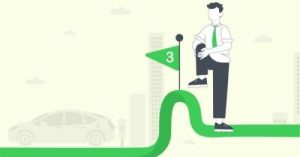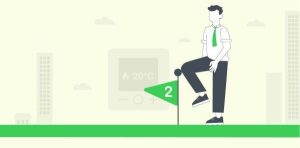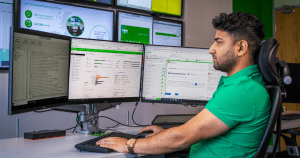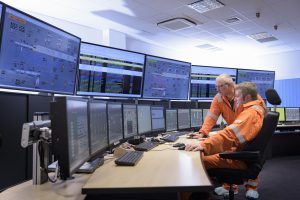You just installed solar panels or are thinking of installing some? Without a Home Energy Management system, you might struggle to use more than 50% of the energy produced by your solar panel. You might debate: why is this important? Because the rest of your production you will sell to your utility at a very cheap price. Ultimately, you might find it long to get a return on your initial investment.
With a Home Energy Management system, you will be able to use the maximum amount of the energy produced. How? By prioritizing the consumption of energy, thus the usage of your electrical appliances, when your solar panels produce the most.

Where to start
Installing solar panels on top of your roof means that you will need a solar inverter to be installed. The solar inverter purpose is to convert the solar energy generated into usable electrical power for your home. It is usually placed not so far from the electrical panel.
Talking about the electrical panel, it might need an upgrade before you can install solar panels. Most of the electrical panels have been installed when the home was built, and it has known few upgrades since then. The panel might then be undersized to receive the amount of electricity brought by the electrical panel. Thus, putting the overall electrical installation into potential danger. If you are in this case, the solar installer might ask you to have it checked by an electrician before they can start the job of installing the solar panels. Hopefully, new solution like the Resi9 Energy Center, allows you to upgrade your installation at a lower cost than if you had to change the entire panel.
Finally, you might want to start storing the electricity you produced, so you can increase your capacity to become self-sufficient. Think about it: solar panels produce electricity at a time you usually need the least power. They produce during the day, when homes are empty, i.e. while you are in the office and your children are at school. The heat produced by the sun naturally warms the rooms, so you don’t need much heating, even if you are working from home. So, the battery back-up can be a great solution for you to avoid wasting the energy you produce and store the surplus energy to use it at a later stage.
All the scenario we mentioned above you can configure manually in the Wiser app. You can as well ask Wiser to manage this automatically for you by activating the AI capability. Wiser will then take the best decisions to utilize the maximum solar energy produced, activating some appliances or storing electricity. All this, without compromising on comfort.

Towards self-consumption
We teased in the introduction: the quickest way to be reaching self-consumption is to have an integrated home energy management system in place, on top of the solar panels.
Integrated is a keyword here. Let’s imagine this is not integrated… you might have on your smartphone:
- One app to monitor the production of your solar panels
- One app to check the status of your battery
- One app to know how much energy you are consuming
- One app to check the charge of your EV
- And one app additional to monitor and control the temperature in your house
With this list of disjointed apps, you might find it very difficult to optimize the usage of your solar energy, and even more difficult to control the big loads of electricity so that they consume when your solar energy is at its maximum.
Hence, it is very important to combine your Home Energy into one single app. Wiser by Schneider Electric can play this role.
Discover the two ways to maximize your self-consumption with Wiser:
Monitor your production
Schneider Electric just launched an inverter, Schneider Inverter, which has a built-in solar production monitoring capability. Compatible with Wiser, the Schneider Inverter will seamlessly communicate its data into the Wiser app.

If you have a third-party inverter, you can monitor your solar energy production and storage on your Energy Dashboard thanks to a PowerTag E. This tiny energy sensor, integrated in your electrical panel to the main incomer, will easily connect to your inverter.
This setup will provide real-time information about the status of your equipment in your Wiser Home app.
Note: you must install a PowerTag E on the main circuit if you want to get the data from the PowerTag installed on specific loads.
Increase your self-consumption rate by installing a battery
To maximize your self-consumption, consider installing a battery, such as the Schneider Boost by Schneider Electric, to store your surplus energy and consume it later.

This will not only reduce your energy bill, but also protect you against power cuts. If you already have a battery, check its compatibility with the Wiser system to connect it to the rest of our ecosystem.
Increase your self-consumption rate with our new AI-based feature “Reduce My Bill”
The system’s AI capabilities automate load operation, including hot water tanks and EV chargers, to coincide with solar energy availability and your needs.
Inside the Wiser App
In Wiser Home app, you can conveniently monitor your solar energy production.

At Schneider Electric, our sustainability experts guide clients to efficiently manage their energy spending, increase efficiency and meet sustainability goals. So, if you’re considering a new power source for your home or business, you should contact us today! Know more about what we can do together to achieve net zero homes.





Add a comment